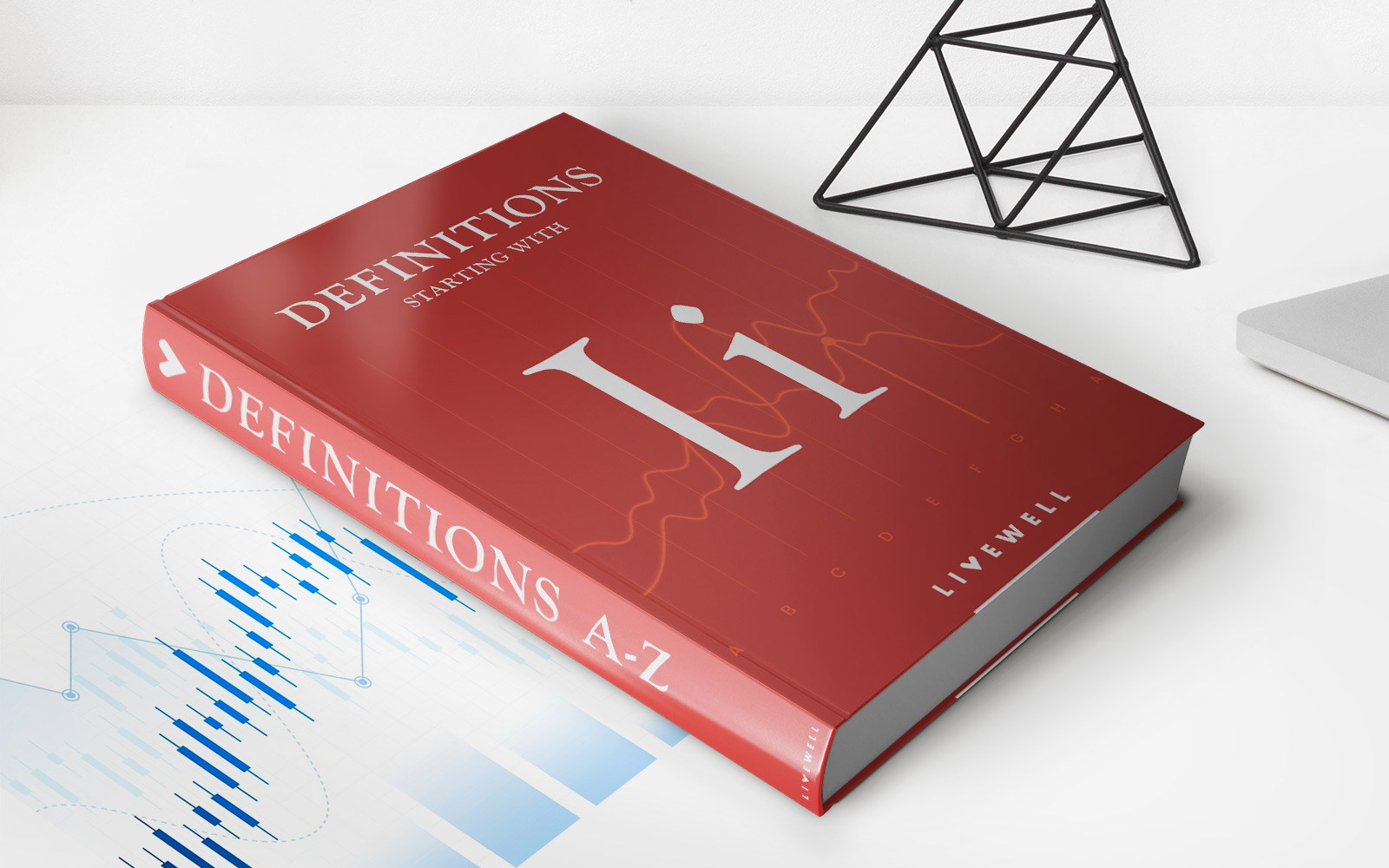Home>Finance>What Happens To Your Pension When Your Company Sells


Finance
What Happens To Your Pension When Your Company Sells
Published: November 27, 2023
Discover what happens to your pension when your company sells, and how company mergers and acquisitions can impact your retirement savings. Find out the financial implications of these changes.
(Many of the links in this article redirect to a specific reviewed product. Your purchase of these products through affiliate links helps to generate commission for LiveWell, at no extra cost. Learn more)
Table of Contents
- Introduction
- Understanding Pension Plans
- Types of Pension Plans
- The Impact of Company Sales on Pensions
- Scenario 1: Acquisition of the Company
- Scenario 2: Merger with Another Company
- Scenario 3: Company Restructuring or Spin-off
- Scenario 4: Bankruptcy or Liquidation
- Steps Taken by Companies to Protect Pensions
- Employee Options and Decision Making
- Conclusion
Introduction
When it comes to planning for retirement, one of the most important considerations for many individuals is their pension plan. A pension plan is a retirement savings vehicle provided by employers, designed to ensure that employees have a steady stream of income after they stop working. However, what happens to your pension when your company sells? This is a question that many employees face when their company undergoes a change in ownership or goes through a significant restructuring process.
In this article, we will explore the various scenarios that can occur when a company is sold and how it may impact your pension plan. We will also discuss the steps taken by companies to protect employee pensions during such transitions and the options available to employees in these situations.
It is essential to have a clear understanding of pension plans and the different types of pension plans that exist before delving into the impact of company sales on pensions. So, let’s begin by looking at what pension plans are and how they work.
Understanding Pension Plans
A pension plan is a retirement savings plan that employers offer to their employees as a benefit. It is designed to provide a steady stream of income to employees after they retire. Pension plans can be a valuable source of financial security during retirement, as they offer a guaranteed income based on predetermined factors such as length of service and salary history.
There are several types of pension plans, but the two most common are defined benefit (DB) plans and defined contribution (DC) plans. In a defined benefit plan, also known as a traditional pension plan, the employer promises to provide a specific benefit amount to the employee upon retirement. This benefit is usually based on a formula that takes into account factors such as years of service and average salary. The employer is responsible for funding and managing the investment of the pension plan assets to ensure that there are sufficient funds to meet the promised benefits.
On the other hand, a defined contribution plan, such as a 401(k) or a similar individual account plan, allows employees to contribute a portion of their salary to a retirement account. The employer may match a certain percentage of the employee’s contributions. The funds within the account are invested, and the final retirement benefit is determined by the performance of these investments. Unlike defined benefit plans, the benefits in a defined contribution plan are not guaranteed, as they depend on the investment returns and the individual’s contributions.
Both types of plans have their own advantages and considerations. Defined benefit plans offer the security of a guaranteed income during retirement, while defined contribution plans provide flexibility and control over investment choices. The type of pension plan a company offers can vary depending on factors such as industry norms, company size, and financial considerations.
Now that we have a better understanding of pension plans, let’s explore how the sale of a company can impact these plans in different scenarios.
Types of Pension Plans
There are several types of pension plans that companies may offer to their employees. Understanding these plans is essential when considering the impact of company sales on pensions. Here are the main types of pension plans:
- Defined Benefit (DB) Plans: In a defined benefit plan, the employer guarantees a specific retirement benefit based on a formula that considers factors such as salary history and years of service. The employer is responsible for funding and managing the investments to ensure that there are sufficient funds to meet the promised benefits. This type of plan provides a predictable and stable income during retirement.
- Defined Contribution (DC) Plans: With defined contribution plans, the employee contributes a portion of their salary to a retirement account, often with an employer match. The funds in the account are invested according to the employee’s choices, and the final benefit is determined by the performance of these investments. Unlike defined benefit plans, the benefits in defined contribution plans are not guaranteed.
- Hybrid Plans: Hybrid plans combine elements of both defined benefit and defined contribution plans. For example, a cash balance plan is a hybrid plan where the employee’s retirement benefit is based on a hypothetical account balance that grows with annual credits and interest rates.
- Self-Directed Plans: Some companies offer self-directed pension plans, where employees have more control and flexibility in managing their retirement investments. These plans may allow participants to select specific assets or investment options for their pension funds.
The type of pension plan a company offers can vary, depending on factors such as company size, industry norms, and financial considerations. When a company undergoes a sale or significant restructuring, the type of pension plan it offers may be impacted, along with the employees’ retirement benefits.
Now that we have explored the different types of pension plans, it’s time to dive into the impact that company sales can have on these plans.
The Impact of Company Sales on Pensions
When a company is sold or undergoes a significant restructuring process, it can have implications for the pension plans offered to employees. The impact on pensions can vary depending on the specific circumstances of the sale and the type of pension plan in place. Here are the potential scenarios that can occur:
- Acquisition of the Company: When a company is acquired by another company, the acquiring company may choose to assume responsibility for the existing pension plan. In this case, there may be little to no impact on the employees’ pension benefits. However, the acquiring company may make changes to the plan, such as freezing future benefit accruals or amending the plan’s provisions.
- Merger with Another Company: In the case of a merger between companies, the approach to pension plans can vary. The merged entity may decide to consolidate the pension plans of both companies into a single plan or continue operating separate plans. Similar to an acquisition, there may be changes made to the plans as a result of the merger.
- Company Restructuring or Spin-off: In some cases, a company may undergo restructuring or spin-off, resulting in the creation of a new entity. This can lead to changes in the pension plan, such as the establishment of a new plan for the new entity or the transfer of pension liabilities to a separate pension trust. The impact on employees’ pension benefits will depend on the specific terms of the restructuring.
- Bankruptcy or Liquidation: If a company goes bankrupt or undergoes liquidation, the impact on pensions can be significant. In such situations, the pension plan may be terminated, and the employees’ pension benefits may be at risk. The Pension Benefit Guaranty Corporation (PBGC) in the United States provides a safety net by assuming responsibility for the pension plans of bankrupt companies up to certain limits.
It’s important to note that these scenarios are not exhaustive, and the impact on pensions can vary depending on the legal and financial considerations of each situation. However, companies are often required to comply with pension laws and regulations to protect the rights of their employees and ensure the proper administration of pension plans.
In the next sections, we will explore the steps taken by companies to protect pensions during such transitions and the options available to employees facing changes to their pension plans.
Scenario 1: Acquisition of the Company
One possible scenario that can impact employee pensions is when a company is acquired by another company. During an acquisition, the acquiring company may choose to assume responsibility for the existing pension plan of the acquired company. In this case, there may be minimal impact on the employees’ pension benefits.
When the acquiring company takes over the pension plan, it becomes responsible for funding and managing the plan going forward. The acquiring company will typically honor the accrued benefits of the employees under the acquired company’s pension plan. This means that employees will continue to receive their pension benefits as scheduled, and their previously accrued benefits will be unaffected.
However, it’s important to note that the acquiring company may make changes to the pension plan after the acquisition. These changes could include freezing the plan, which means that employees will no longer earn additional benefits under the pension plan. Alternatively, the acquiring company may amend the plan’s provisions, such as adjusting the eligibility requirements or changing the formula used to calculate future benefits.
Employees should pay close attention to any communications from the acquiring company regarding the pension plan. These communications should outline any modifications to the plan and provide information on how the pension benefits will be affected. It’s crucial for employees to review and understand these changes to make informed decisions about their retirement plans.
Some employees may also have the option to transfer their pension benefits to the acquiring company’s pension plan or roll them over into an individual retirement account (IRA). These decisions should be carefully considered, taking into account the potential impact on future retirement benefits and any associated fees or tax implications.
In summary, when a company is acquired, the acquiring company may choose to assume the existing pension plan. While accrued benefits are typically honored, there may be changes made to the plan going forward. Employees should stay informed about any modifications and evaluate their options to make the best decisions for their retirement.
Scenario 2: Merger with Another Company
In the case of a merger between companies, the impact on employee pensions can vary depending on the approach taken by the merged entity. There are several possible scenarios that can occur during a merger:
- Consolidation of Pension Plans: The merged entity may choose to consolidate the pension plans of both companies into a single plan. This can streamline the administration and potentially reduce costs. Employees’ pension benefits from both companies would be combined into the new, consolidated plan. Any changes to the structure or provisions of the plan would be communicated to employees.
- Maintenance of Separate Plans: Alternatively, the merged entity may decide to maintain separate pension plans for employees from each company. In this scenario, employees would continue to be covered by their respective pension plans, and there may be minimal impact on their retirement benefits.
- Changes to Pension Plans: During a merger, it is common for the merged entity to make changes to the pension plans. These changes could include modifying eligibility criteria, adjusting benefit formulas, or introducing new investment options. Any modifications to the pension plans should be communicated to employees, along with information on how the changes may impact their retirement benefits.
Employees should carefully review any communications from the merged entity regarding the pension plans. It is crucial to understand how the changes will affect their pension benefits and what options they may have moving forward. Employees may have the opportunity to provide input and feedback on the changes during the merger process.
During a merger, employees may also face decisions regarding the transfer of pension benefits. They may be given the option to transfer their pension benefits into the new consolidated plan or to roll them over into an individual retirement account (IRA). It is essential to evaluate these options based on factors such as the potential impact on future retirement benefits, fees, and tax implications.
Ultimately, the impact of a merger on employee pensions will depend on the specific circumstances and decisions made by the merged entity. Employees should stay informed, ask questions, and seek guidance from their employers or financial advisors to make informed decisions about their retirement plans.
Scenario 3: Company Restructuring or Spin-off
Another scenario that can impact employee pensions is when a company undergoes a restructuring or spin-off. In these situations, the company may create a new entity or reorganize its business divisions, which can lead to changes in the pension plan.
During a restructuring or spin-off, the company may establish a new pension plan for the new entity or transfer pension liabilities to a separate pension trust. This can result in changes to the structure and administration of the pension plan, potentially affecting employees’ retirement benefits.
If a new pension plan is established, employees may be required to enroll in the new plan and have their future retirement benefits calculated based on the provisions of the new plan. Employees should carefully review the terms and conditions of the new plan, including the benefit formula, vesting schedule, and investment options, to understand how their retirement benefits may be impacted.
If the pension liabilities are transferred to a separate pension trust, the trustee of the trust will be responsible for managing the plan and ensuring the payment of pension benefits to eligible employees. In this case, employees’ accrued benefits may be protected, but there may be changes to the pension plan provisions and administration going forward.
It is crucial for employees to stay informed about any changes to the pension plan during a restructuring or spin-off. Employers are generally required to communicate any modifications to the plan and provide employees with the necessary information to understand the impact on their retirement benefits.
Employees may also have the option to transfer their pension benefits to the new pension plan or roll them over into an individual retirement account (IRA). It is important to carefully evaluate these options, considering factors such as the potential impact on future retirement benefits, fees, and tax implications.
During a company restructuring or spin-off, employees should proactively seek information and ask questions about the changes to their pension plan. It may be beneficial to consult with financial advisors or pension specialists to fully understand the implications and make informed decisions about their retirement plans.
Scenario 4: Bankruptcy or Liquidation
When a company faces financial distress and ultimately goes bankrupt or undergoes liquidation, the impact on employee pensions can be significant. In these unfortunate scenarios, the pension plan may be terminated, and employees’ retirement benefits may be at risk.
During bankruptcy or liquidation, the company’s assets are typically sold to repay creditors. However, the funds generated from the sale may not be sufficient to cover all liabilities, including pension obligations. As a result, the pension plan may not have enough assets to fulfill the promised benefits to employees.
To safeguard employee interests in such cases, governments have established systems to provide a safety net for pension plans. For example, in the United States, the Pension Benefit Guaranty Corporation (PBGC) acts as an insurer for private-sector pension plans. If a bankrupt company’s pension plan qualifies for PBGC protection, the PBGC may assume responsibility for the plan and pay benefits to the extent allowed by its limits.
However, it is essential to understand that the PBGC has limits on the amount of benefits it can provide. The maximum limits are determined by federal law and depend on various factors such as the individual’s age and the type of pension plan.
In the unfortunate event of bankruptcy or liquidation, employees should stay informed and regularly communicate with the plan administrator, the PBGC, or the designated authority in their respective jurisdictions. These entities will provide updates on the status of the pension plan, including information on benefit payments and potential limitations.
It is important to note that during bankruptcy or liquidation, decisions about the pension plan may be made by the court, creditors, or the relevant authorities. Employees should consult with legal counsel or financial advisors to understand their rights and explore any potential recourse.
Employees affected by a company’s bankruptcy or liquidation may also need to consider other options for their retirement savings. This could include rolling over their pension benefits into an individual retirement account (IRA) or exploring other retirement income streams, such as Social Security benefits.
In summary, during bankruptcy or liquidation, the pension plan may be terminated, and employees’ retirement benefits may be at risk. The PBGC or other designated authorities may provide a safety net, but there may be limits on the benefits they can offer. Employees should stay informed, seek guidance, and understand their rights and options in these unfortunate circumstances.
Steps Taken by Companies to Protect Pensions
Companies are often aware of the importance of protecting employee pensions, especially during times of company sales, mergers, or other significant changes. While the specific steps taken can vary depending on the circumstances, there are general measures companies may put in place to safeguard pensions. Here are some common steps taken by companies:
- Communication and Transparency: To ensure employees are well-informed about their pension plans, companies strive to maintain open lines of communication. This includes providing clear and regular updates regarding any changes to the plan, potential impacts, and available options. Transparent communication helps employees understand their rights and make informed decisions about their retirement benefits.
- Legal Compliance: Companies must comply with pension laws and regulations to protect the rights of employees. These laws often include requirements for plan funding, disclosures, and fiduciary responsibilities. Adhering to these laws helps ensure that pensions are managed responsibly and that employees’ retirement benefits are safeguarded.
- Pension Plan Funding: Companies are typically required to fund their pension plans adequately. This involves contributing funds to the plan on an ongoing basis to build the necessary pool of assets to meet future benefit obligations. By fulfilling their funding obligations, companies help ensure the financial stability of the pension plan.
- Engaging Independent Trustees and Administrators: Some companies engage independent trustees or administrators to manage the pension plan. These professionals have fiduciary responsibilities and act in the best interests of the plan participants. Their involvement helps protect the plan from potential conflicts of interest and ensures that pension assets are managed prudently.
- Employer Support and Commitment: Companies committed to protecting employee pensions often prioritize retirement benefits as a critical part of their employee compensation packages. By demonstrating a long-term commitment to employee pensions, companies can instill confidence and trust among their workforce.
- Collaboration with Regulatory Agencies: In regulated industries, companies may work closely with regulatory agencies to ensure compliance with pension laws and to stay updated on any changes or developments. Such collaboration helps companies navigate complex regulations and stay informed about their responsibilities towards employee pensions.
It’s important to note that while companies take steps to protect pensions, unforeseen circumstances or financial challenges may still impact the stability of pension plans. In such cases, employees should stay informed, ask questions, and seek guidance from their employers, legal advisors, or financial professionals.
Employees can also play an active role in protecting their own pensions by staying educated about their plan, reviewing plan documents regularly, and keeping track of their individual pension benefits. Understanding one’s pension rights and taking proactive steps can help employees make informed decisions and better secure their retirement.
In summary, companies take various measures to protect employee pensions, including communication, legal compliance, proper funding, engagement of independent trustees, support from the employer, and collaboration with regulatory agencies. However, employees should also take an active role in understanding their pensions and exploring how best to safeguard their retirement benefits.
Employee Options and Decision Making
When faced with changes to their pension plans due to company sales, mergers, or other significant events, employees have several options to consider. It is crucial for employees to carefully evaluate their choices and make informed decisions about their retirement benefits. Here are some common options and factors to consider:
- Stay in the Pension Plan: In some cases, employees may have the option to remain in the existing pension plan without any changes. This option can be favorable for individuals who are satisfied with the current plan provisions and believe it will continue to meet their retirement needs.
- Transfer to a New Plan: If a new pension plan is established as a result of a company sale or merger, employees may have the choice to transfer their pension benefits to the new plan. It is important to carefully review the details of the new plan, including benefit calculations, vesting schedules, and investment options, to determine if the transfer aligns with one’s retirement goals.
- Rollover into an IRA: Another option for employees is to roll over their pension benefits into an individual retirement account (IRA). This provides more control and flexibility over investment choices. It is crucial to consider the tax implications and any potential fees associated with the IRA rollover.
- Take a Lump Sum: In some cases, employees may have the option to receive a lump sum payment instead of the traditional pension annuity. It is essential to evaluate the advantages and disadvantages of a lump sum, including investment risks, potential tax consequences, and the ability to secure a steady income during retirement.
- Consider Other Retirement Options: Depending on one’s financial situation and retirement goals, it may be necessary to explore other retirement income sources, such as individual investments, annuities, or Social Security benefits. Understanding these options and consulting with financial advisors can provide a broader perspective on retirement planning.
When making decisions about pension options, employees should carefully consider factors such as their age, anticipated retirement needs, financial goals, risk tolerance, and tax implications. It can be beneficial to seek guidance from financial advisors or retirement specialists to evaluate the available options and assess their potential impact.
Additionally, employees should stay informed and take advantage of any resources provided by their employer or pension plan administrator. This includes reviewing plan documents, attending informational sessions or webinars, and asking questions to ensure a clear understanding of the available options.
It is important to note that the decision-making process for pension options is personal and may vary based on individual circumstances. What works for one employee may not be suitable for another. Therefore, employees should take the time to assess their unique situation and make choices that align with their retirement goals and financial well-being.
In summary, employees facing changes to their pension plans should carefully evaluate their options, considering factors such as staying in the current plan, transferring to a new plan, rolling over into an IRA, taking a lump sum, or exploring other retirement income sources. Seeking advice from financial professionals and staying informed about available resources can assist employees in making informed decisions about their retirement benefits.
Conclusion
Planning for retirement is a significant aspect of everyone’s financial journey, and understanding what happens to your pension when your company sells is crucial for making informed decisions. Throughout this article, we have explored various scenarios that can impact employee pensions during company sales, mergers, restructuring, and bankruptcy.
We discussed the different types of pension plans, including defined benefit (DB) plans and defined contribution (DC) plans, highlighting their distinct features and benefits. By understanding the basics of pension plans, employees can better grasp the potential implications of company sales on their retirement benefits.
In scenarios where a company is acquired or merged, there may be changes to the pension plan, such as freezing future benefit accruals or amending plan provisions. Company restructuring or spin-offs can also lead to the establishment of new pension plans or the transfer of pension liabilities to separate pension trusts.
In unfortunate cases of bankruptcy or liquidation, the pension plan may be terminated, and the Pension Benefit Guaranty Corporation (PBGC) may step in, up to certain limits, to protect employees’ pension benefits. However, it is essential to understand that there may still be limitations on the benefits provided.
We also explored the steps taken by companies to protect employee pensions, including transparent communication, legal compliance, proper funding, engagement of independent trustees, employer commitment, and collaboration with regulatory agencies.
Employees have important decisions to make when it comes to their pension options. Factors such as staying in the pension plan, transferring to a new plan, rolling over into an IRA, taking a lump sum, or considering other retirement income sources should be carefully evaluated based on individual circumstances and retirement goals.
In conclusion, being informed about pension plans, staying engaged with company communications, seeking guidance from professionals, and conducting thorough evaluations of pension options are crucial steps in protecting and maximizing retirement benefits when a company goes through changes. By taking a proactive approach and making well-informed decisions, employees can navigate these transitions with confidence and ensure a secure and stable retirement future.














